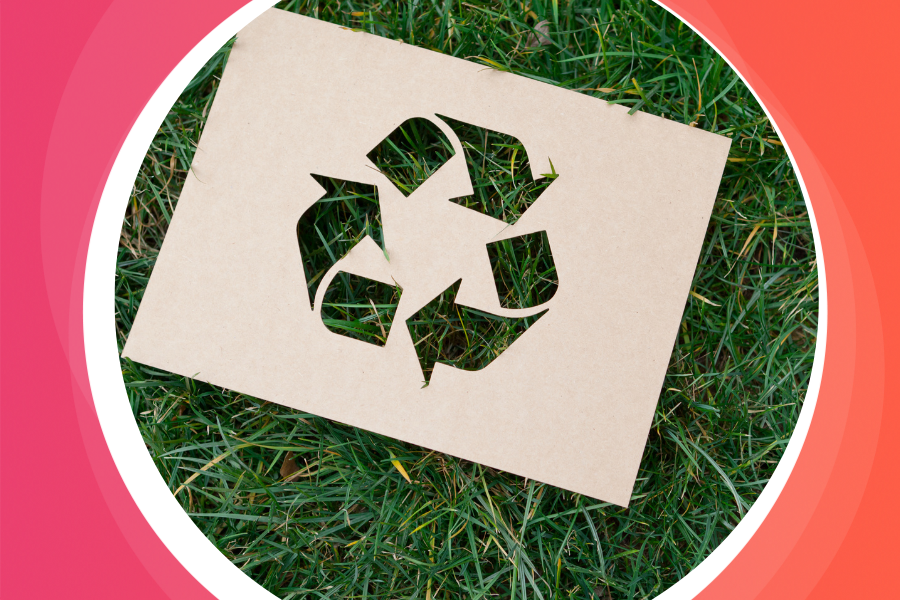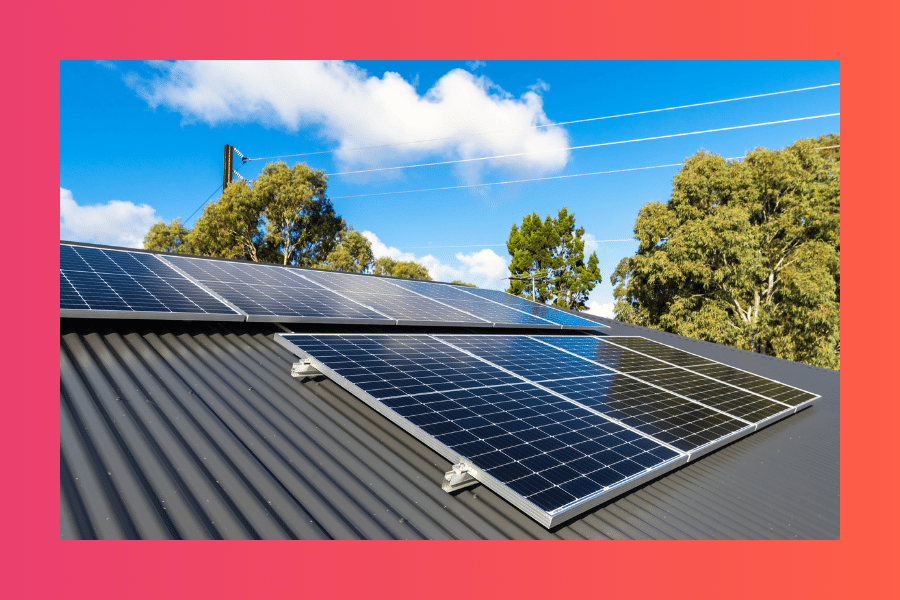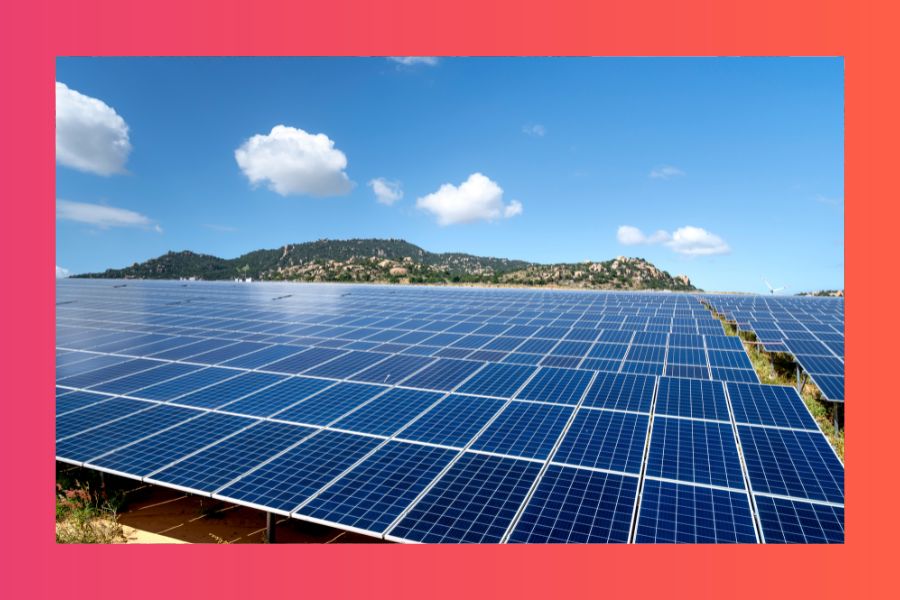South Australia in 2022: Measuring the Success of a Leading Solar State
In 2022 Australia is further solidifying its status as a world-leading country when it comes to embracing solar power, and South Australia has...

In the 2020s it’s clear the way in which we live has to change significantly, and rapidly. The ever-growing threat of climate change means no longer can human beings continue to dominate the planet to the detriment of its natural resources. Instead, new ways must be found in which daily life can continue to operate as it does, but via avenues that are less damaging to the environment. The shift from utilising fossil fuels to renewable energy is a very visible example of this change, but it’s indeed not the only one.
Building goods with more sustainable materials is another path we need to take in this regard. It’s encouraging that - while there’s certainly still more work to be done - progress is being made each year in terms of growing consumer demand for sustainable goods, and the growth of businesses who aspire to lead this transition by offering sustainable products. But ultimately, while crafting new goods from sustainable materials is terrific, it’s just one side of the coin, because eventually goods can wear out, and need to be discarded. It’s for this reason that the process of recycling is important, and in turn, so too is a discussion of the current reality of recycling in Australia.
When it comes to recycling in Australia, the nation has a story which is one of rather painful contrasts. For instance, while the arrival of European settlers kicked off a new era which saw - alongside the harm caused to the First Australians - profound harm done to the environment, given the limited supplies settlers had in comparison to what was available back in the United Kingdom, it’s held an early form of recycling culture can actually be found in this chapter of history.
In more recent times, it can be said millions of Australians have commendably grown up with a consciousness surrounding recycling, and the recycling programs - such as the use of recycling bins for regular collection of household goods each month - is rather terrific when considering the fact that many jurisdictions today elsewhere beyond Australia still don’t have such a system in place. That’s why it’s all the more unfortunate that stats from the World Wildlife Fund published in June 2021 hold in 2017-18 over 3.4 million tonnes of plastic were utilised in Australia - but just 9.4% of it was recycled.
Figures from the Australian government paint a prettier picture - it contends 60% of the waste we produce each year is recycled - but they also hold over 74 million tonnes of waste is made each year. As a result, (at least) around 30 million tonnes of waste is created annually in Australia, and effectively ends up destined for the garbage tip. Ultimately, there are a number of different metrics out there that can be used to assess a country's recycling rate, and - especially when used in comparison to other nations elsewhere who may use different metrics - it’s often easy for a horrific or (relatively) heartening picture to be put forward. The reality is this is the case with Australia, as it is with other nations elsewhere.
Yet, while in certain instances some data will offer a comparatively positive note - for instance, Australia has often ranked in the top 20 to 30 globally in terms of its recycling rate - the fact is an an immensely rich nation, there is rightfully a much higher expectation for Australia to be able to pursue progressive policies in this space, in comparison to countries with less resources. Overall, a common theme emerges here; yes Australia has made some strong inroads, and some in cases performs better than many other nations globally, but unquestionably there is a greater capacity - and need! - to do better. The following section will show why.
For a typical Australian who is a casual participant in recycling initiatives, the greatest consequences that may be seen with their own eyes regularly surrounding a failure to recycle are likely to be small (at first). After all, a few glass bottles that end up in the wrong bin on garbage day don’t result in the world ending that week, right? Yet the reality is that the flow-on effects from the failure of communities to introduce and effectively maintain a proper recycling plan can indeed result in some very significant and direct implications for regular Australians in their daily lives over time.
When goods aren’t recycled they end up in a landfill, and - be it existing ones that continue operations, or new ones which are created over time - they can pose a health risk to people nearby. In particular, evidence illustrates “that people living closer to landfill sites suffer from medical conditions such as asthma, cuts, diarrhoea, stomach pain, reoccurring flu, cholera, malaria, cough, skin irritation, cholera, diarrhoea and tuberculosis”. Yet ultimately, the impacts of an increase in pollution are certainly not just confined to those who live or work in close proximity to a landfill site.
A growth in pollution - especially when it’s (even more) poorly managed by civic authorities - can result in the diminishment of water quality in the area, among other factors. Additionally, the destruction of natural habits for wildlife. Although Australia likes to envision itself as a land of natural beauty with amazing natural wildlife not found elsewhere on Earth, the tragic reality is that the country is ultimately a world leader when it comes to the rate of wildlife extinctions.
Undoubtedly, there are many factors behind this trend, and so yes, the failure of a single person to put a bottle in the right spot on bin night isn’t risking the extinction of the Koala then and there. As aforementioned at the start, there are other elements at play contributing to environmental harm like climate change - and so even if Australia’s national government took total charge of recycling and then put out a simply perfect nationwide recycling policy, they’d still need to lift their game in other areas - but this reality speaks to the fact that Australia can ill-afford to be lax about having a world-class recycling program, especially if it ever desires to shake off its status as a world leader in the extinction of wildlife.
It’s of course necessary to note even in a perfect world not all goods will be sustainable. A very prominent example of this is medical goods, and ever since the outbreak of the Covid-19 pandemic concerns around the risk of infection have heightened further. So, some goods will need to remain single-use in future. This said, it’s also the case that there is certainly scope for more goods to be recycled in future than they are currently. This applies at a micro level - for instance, by repurposing old jars and bottles for use in the kitchen, and using old clothes as cleaning rags instead of tossing them away - and at a macro level, such as the capacity for cities and countries to grow recycling practices and resources across society as a whole.
While the micro and macro of recycling are indeed separate, it’s also necessary to mention how the Covid-19 pandemic has altered the dynamic here significantly, and it’s necessary that individual households all the way up corporations and civic authorities factor this in when planning for the future. Whereas in the years pre-pandemic the majority of business activity would occur in a city - and specifically a CBD - now with a sizeable chunk of the workforce working-from-home (and intending to stay that way), this has taken pressure off CBD waste collection. Although this is positive, a challenge with the rise of the work-from-home model has been the huge surge in household waste, seen commonly in the packaging of online orders and takeaway food that has been delivered to the home.
Although it’s positive that a lot of these goods often come in recyclable packaging, the sheer increase in it - and its spread across the suburbs instead of being disposed of in the CBD - has created a new challenge for waste collection. Ideally this increase would result in more council bin collections, but in reality a number of recent stories illustrate an apparent trend towards trying to decrease the rate of waste collection services in many areas. Each council is different, but it is concerning to seemingly see a common approach in many instances that is highly unlikely to provide real results.
While the intention behind a reduction in solid rubbish waste collection services pursued by numerous councils may be well-intended - to encourage people to think more mindfully about what they buy and toss out - the pandemic’s demand that we spend more time at home has naturally resulted in more goods being brought, and more rubbish being generated as a result. If recycling services and regulations are significantly beefed up, that would not only positively incentivise Australians to recycle more, but also provide a greater recycling outlet that responds to this current challenge surrounding the pandemic, and the ongoing widespread shift to a work-from-home society where many Australians will either work exclusively in their home from now on, or do so for at least a few days each week.
While advocates for such changes in bin collections will argue that a reduction of solid rubbish collection to once every fortnight is still a gain, ultimately the upheaval surrounding Victoria’s recycling sector in recent years - mindful of the fact there’s certainly been problems elsewhere in Australia too - illustrates the ease in which authorities can get ‘caught short’ in terms of a proper plan when it comes to recycling, and doubt persists surrounding the future prospects of the Victorian industry to deliver on the aspirations had for recycling among residents of the state.
Now, in an era where the need to dispose of manufactured goods such as online shopping packages and takeaway boxes has increased due to the pandemic, there’s a need for waste collection policies which respond to that. However commendable it may be that there's been movement to putting a greater emphasis on food waste collections - where a council looks to collect a food waste bin weekly (albeit in-part to offset the reduction of the solid rubbish bin to a fortnightly collection) - it has to be matched by a suitable growth in services to properly deal with other kinds of rubbish. For instance, increasing the collection of the recycling bin from fortnightly - a timetable which many councils currently operate via - to weekly. If this doesn’t occur, such tinkering with other bin schedules can perhaps be regarded not as transformational, but instead akin to ‘shifting deck chairs on the Titanic’, given if people don’t have (an increase in) avenues to recycle, then goods which could be recycled are likely to just end up in solid rubbish bins anyway.
If Australia is searching for a leading example of how to better deal with recycling, the experience of Germany in recent decades is a great success story. Germany is the world leader when it comes to recycling. But this progress certainly didn’t happen overnight. It has required a mix of long-term vision, putting the right policies in place, and sufficiently motivating the private sector to contribute to positive change.
Central to this approach from Europe’s largest economy was the formulation of laws and regulations from the early 1990s onwards which made the producers of products responsible for the packaging waste that accompanied their goods. This meant in effect businesses were incentivised to create goods that were not a headache for them or the environment to dispose of, and ultimately led to the development of what’s today known as Der Grüne Punkt (AKA The Green Dot), a set of systems for dealing with waste.
With producers required to contribute funding to this programme - which can vary depending on the material a product is made of, in addition to the needs surrounding its sorting, recycling, and so on - this initiative is today not only in operation in Germany, but across wider Europe as well. Like essentially every recycling endeavour there is always more work to be done in terms of its overall progress, but there can be no doubt the success of what Germany began back in the 1990s offers an enticing blueprint for other countries to reference when it comes to formulating a more robust and effective recycling policy in this decade.
When it comes to setting statewide and national policies, the ultimate responsibility surrounding recycling of course resides with government. This said, it’s also important to recognise the capacity of each person, and individual households, to help effect positive change in this regard.
Furthermore, the exciting aspect of recycling when it comes to the individual and household level is the abundance of easy but effective steps that can be taken to promote it. Instead of always tossing out old business documents, often they can double as play paper for the kids. Instead of leftovers getting forgotten in the fridge only to eventually find their way into the garbage, they can make their way into a compost bin, and later come to be used as fertiliser. Then there’s the prospect of participating in a container deposit scheme, by having a dedicated bin for containers, and taking the goods to a recycling centre once full to drop off, and to receive a refund for each container deposited!
And for those keen to take their clean and green credentials to the next level? If yet to acquire one, looking in-depth at the immense benefits a rooftop solar system can bring to a home - in addition to what many fantastic smart home upgrades can offer - is sure to be time well spent.

In 2022 Australia is further solidifying its status as a world-leading country when it comes to embracing solar power, and South Australia has...

Mid-2022 finds many Australian households confronted with a soaring cost of living. They’re seeing it with their grocery and car bills, and at home...

2022 has been a momentous year in the Australian solar sector. By many measures, it has been another 12 months of great progress for renewable energy...